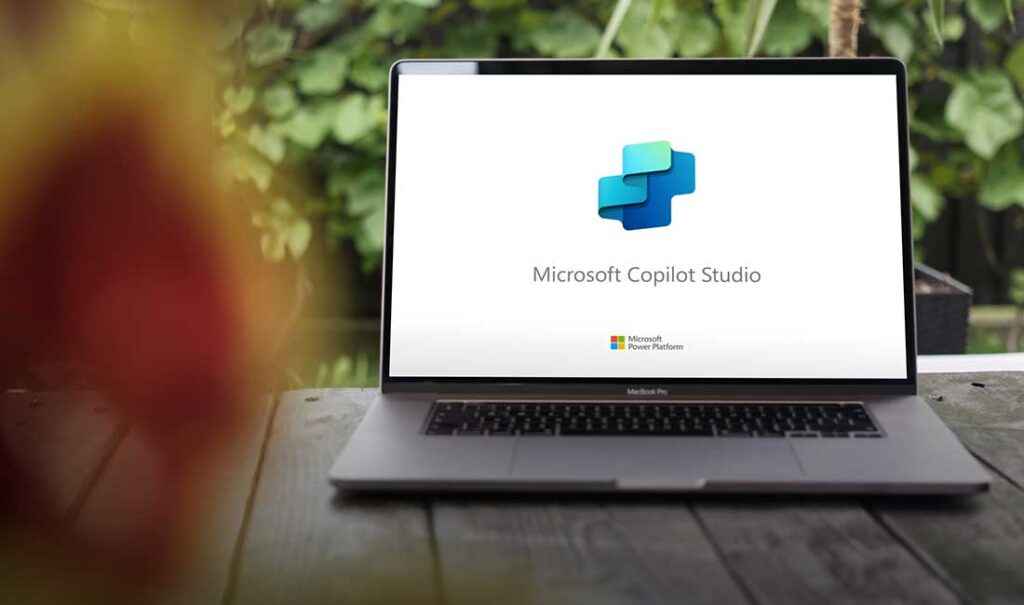Innovative companies are excited about the productivity gains from AI assistants like Microsoft 365 Copilot. However, security and privacy remain top of mind. In fact, 74% of business leaders worry about AI’s impact on data privacy. Nearly as many (71%) cite related security risks. Therefore, a secure Microsoft Copilot deployment is essential to unlock innovation while protecting sensitive information. By following best practices for security and compliance, organizations can confidently roll out Copilot to employees. The goal is to maximize Copilot’s benefits for collaboration and efficiency. At the same time, your organization maintains control over data and meets regulatory requirements. Below, we outline key strategies to ensure a secure and successful Copilot deployment in your enterprise.

Strong Identity and Access Management
One foundational best practice is implementing robust identity and access controls for Copilot users. Zero trust architecture principles can guide this approach by requiring continuous verification for every access attempt. Start by integrating Copilot with your existing identity management. Enforce multi-factor authentication (MFA) for all users to add an extra layer of security. Additionally, leverage Conditional Access policies to restrict Copilot access to trusted devices, locations, and risk profiles. For example, if a login appears suspicious, Copilot’s features for that user can be automatically blocked until verified.
Furthermore, apply the least privilege model to Copilot permissions. Each user’s access within Copilot should be limited to the data and resources they truly need for their role. This way, even if an account is compromised, an attacker cannot access broad swaths of data through Copilot. Using tools like Azure AD Privileged Identity Management allows just-in-time elevation for special cases. This avoids granting standing high-level access. By tightly managing identities and access, you prevent unauthorized use of Copilot. This significantly reduces the risk of data exposure through compromised credentials.
Data Governance and Compliance Controls
A secure Copilot deployment must include strong data governance to prevent sensitive information from leaking. Microsoft Purview provides a unified solution for data classification, Data Loss Prevention (DLP), and auditing across Microsoft 365. Implement automated data classification to label confidential data (financial records, personal data, etc.). This ensures Copilot knows what it is allowed to access. For instance, content marked “Highly Sensitive” can be excluded from Copilot’s retrieval results. At the same time, configure DLP policies to prevent sensitive information from being shared via Copilot. For example, if a user tries to include confidential data in Copilot-generated content, the DLP can block or redact it.
Protect Your Data Through Copilot Deployment
Oversharing prevention is another crucial aspect. Copilot will only surface data that a user already has access to. This means any overly broad permissions in SharePoint or Teams could lead to unintended exposure. Review and tighten permissions on shared sites and Teams groups. Ensure that “everyone” or other broad groups don’t have access to confidential files. By curbing permission bloat, you ensure Copilot cannot retrieve data that a user shouldn’t see in the first place. As an extra layer, use sensitivity labels. If Copilot references labeled content, it will carry over those labels to its responses. This ensures compliance is maintained with AI-generated output.
Regularly audit and monitor Copilot’s usage using Microsoft Purview’s audit logs and eDiscovery tools. Compliance officers gain insight into how the organization uses AI. This oversight simplifies demonstrating regulatory compliance. Administrators can quickly verify that Copilot processes no Personal Health Information. Robust data governance safeguards the business against breaches and fines, while strengthening internal and client trust in the responsible use of AI. For context, data breaches now cost organizations an average of $4.8 million per incident, so the stakes for protecting data in AI tools are high. Effective governance and DLP significantly reduce these risks.

Secure Devices and Network Environment
Protecting the environment where users access Copilot is another best practice for a secure Copilot deployment. Endpoint security measures ensure that only healthy, trustworthy devices can use Copilot. Leverage an enterprise mobile device management solution like Microsoft Intune to enforce device compliance policies. All laptops, tablets, and phones running Copilot should meet security standards (up-to-date patches, encryption enabled, approved apps only). Automatically revoke Copilot access when a device falls out of compliance. Restrict corporate resources until the device is secure.
Additionally, deploy advanced threat protection tools, such as Microsoft Defender for Endpoint, across all user devices. This helps detect malware or suspicious activity that could exploit Copilot. Block a compromised device from using Copilot. It should remain blocked until the device is secure again. Pair endpoint protection with network security measures. For example, require all Copilot traffic to go through encrypted channels (e.g., enforce VPN or secure connections). Also, segment network access so that Copilot-related data flows are isolated from more sensitive systems. Even if an intruder gains network access, proper segmentation and encryption will limit their ability to intercept Copilot data. These controls significantly reduce the chance of eavesdropping on any AI-driven queries.
Protecting the Cloud
Microsoft 365 Copilot keeps data within Microsoft’s secure cloud boundaries. However, administrators should consider disabling any optional Copilot features that might send data externally. For instance, you might turn off Copilot’s integration with third-party plugins or web content initially. This is advisable if data residency is a concern . You can always enable these features later after evaluating the risks and ensuring proper controls. Overall, by securing endpoints and the network, you create a safe operational zone for Copilot. This greatly lowers the chance that a breach of one device will turn into a larger incident via Copilot.
User Training and Policy Enforcement for Your Copilot Deployment
Educate users and establish clear usage policies to complement technology defenses. Employee training is vital so that staff understand how to use Copilot securely. Many employees may not realize that an AI assistant could inadvertently expose data if used carelessly. Provide training sessions and guidelines about what types of questions to avoid. For example, caution employees not to use prompts that might reveal personal data or trade secrets. Emphasize Copilot’s usefulness for productivity. However, it should not be given any information that employees wouldn’t usually share via company-approved channels.
Additionally, create an AI usage policy that outlines acceptable use of Copilot and other generative AI tools in the workplace. This policy should cover confidentiality, data handling, and ethical guidelines. It may prohibit using Copilot to draft content that includes sensitive client details. It could also require a human review of AI-generated communications before sending anything externally. Having formal policies sets expectations and gives management a basis to intervene if someone misuses the tool.
Monitor user interactions with Copilot to enforce these policies. Use Purview and audit logs to track Copilot usage. IT and compliance teams should regularly review logs for potential issues. Detect queries that violate policy and promptly identify attempts to bypass security controls. Foster a culture of responsible AI use by celebrating productivity driven by Copilot. Highlight examples of safe and compliant Copilot interactions. When employees understand and use Copilot responsibly, the organization can fully realize AI’s benefits while minimizing security risks.
Phased Copilot Deployment and Continuous Improvement
It is wise to roll out Microsoft Copilot in phases rather than enabling it for everyone on the first day. Many organizations start with a pilot program involving a small group of tech-savvy users or a specific department. This allows the IT team to observe Copilot in action, gather feedback, and fine-tune security settings before deploying it more broadly. For example, one global firm began by working with 300 early adopters to test Copilot’s feasibility and refine its policies. It then scaled up to 2,000 users and beyond in stages. A phased approach will surface any configuration gaps or user training needs on a smaller scale. You can address those issues before company-wide use.
During the pilot and subsequent waves, establish a feedback loop with users. Encourage them to report any concerns, confusing Copilot behaviors, or potential security issues. Their real-world experience is invaluable to improve how Copilot is governed. Use those insights to adjust policies, add new blocked terms or data categories, and continually update training materials. It’s also helpful to have an AI governance committee or task force overseeing the Copilot deployment. This cross-functional team (including IT security, compliance, and business leaders) can evaluate Copilot’s impact. It can then recommend improvements to security configurations or usage guidelines over time.
Finally, stay updated with Microsoft’s own enhancements to Copilot’s security features. Microsoft regularly updates its AI models and might introduce new admin controls or compliance certifications for Copilot. By keeping your Copilot deployment aligned with the latest best practices and product features, you ensure long-term security. Deploying Copilot is not a one-and-done project – it requires ongoing attention. But with a proactive, phased strategy, your organization can confidently expand Copilot’s use. You will know that each step is secured and optimized for your needs.
Unlock Productivity Securely with Your Deployment
Microsoft 365 Copilot promises to revolutionize productivity by automating tasks, synthesizing information, and enhancing collaboration. By following these best practices for a secure Copilot deployment, executive leaders can embrace this innovation without compromising on security or compliance. In summary, focus on several key areas. Ensure strong access controls, rigorous data governance, hardened devices and networks, well-trained users, and a thoughtful rollout plan. This comprehensive approach mitigates the risks associated with AI-powered tools.
With the right safeguards in place, Copilot becomes a trustworthy assistant rather than a potential liability. Your teams will be able to work smarter. They can draft documents, analyze data, and communicate faster – all within a secure framework that protects what matters most.
Coretelligent can help your organization implement these security measures and tailor Copilot to your business needs. Through our Outsourced CISO services and AI & Emerging Technologies solutions, we partner with clients to ensure their AI deployments are both innovative and secure. By choosing a strategic approach to Copilot deployment, you ensure your company reaps the benefits of AI-driven productivity while maintaining complete confidence in the security of your IT environment.
